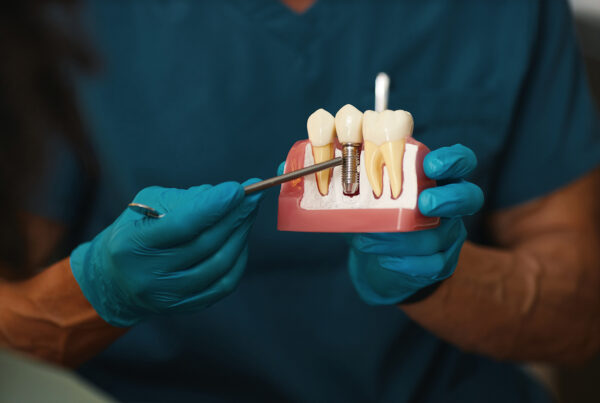Ever wondered about the intricacies of endodontics, or more specifically, the enigma that is endodontic retreatment? Don’t worry, you’re not alone! Many people find dental terminology to be a bit daunting. But fear not, we’re here to unravel the complexities and distill it into easily understood information.

What is an Endodontist in Dentistry?
You might have heard of dentists and orthodontists, but “endodontist” might be a new term for some. An endodontist is a specialized dentist who treats diseases or injuries affecting your dental pulp—the innermost part of your tooth that houses nerves and blood vessels. These professionals complete an additional two to three years of training beyond dental school to manage intricate procedures that help save your natural teeth.
What Procedures Does an Endodontist Perform?
Endodontists are often hailed as the “root canal specialists,” but their expertise extends beyond that. They treat a variety of conditions related to the dental pulp and the roots of the tooth. Some common procedures they undertake include:
Root Canal Treatment (RCT): This procedure is done to save a tooth that has an infected or inflamed pulp. Endodontists remove the affected pulp, clean and shape the inside of the root canal, then fill and seal the space.
Endodontic Surgery: Sometimes, a conventional RCT might not be enough to save a tooth. In such cases, endodontists resort to surgical interventions, like an apicoectomy (removal of the root tip) or a root end filling.
Treating Dental Trauma: Accidents can lead to injuries within the tooth. Endodontists are skilled in managing such situations and preventing long-term complications.
Endodontic Retreatment: In some cases, a tooth that has previously undergone a root canal may fail to heal or pain may persist, necessitating a retreatment.
What is Non-Surgical Endodontic Treatment?
Non-surgical endodontic treatment, more commonly known as root canal therapy, is the most prevalent procedure performed by endodontists. It’s non-invasive compared to other dental procedures and can often be completed in one or two appointments. The primary goal is to save the natural tooth, eliminate bacteria from the infected root canal, prevent reinfection, and promote natural healing.
Now that we have a broader understanding of an endodontist’s role let’s focus on the primary topic at hand—endodontic retreatment.
Unraveling the Mystery of Endodontic Retreatment
While root canal treatments boast a high success rate, some teeth may not heal as expected, and the initial treatment might not provide complete relief. Symptoms could recur months or even years after the initial treatment. Such situations call for an endodontic retreatment.
Endodontic retreatment involves re-cleaning the root canal system, removing the previous root filling, investigating the causes of failure, and then refilling and resealing the root canals. It’s not drastically different from the first procedure.
What Triggers the Need for Retreatment?
Endodontic retreatment becomes necessary under a variety of circumstances, each revolving around the fundamental idea that the initial root canal therapy didn’t fully resolve the problem at hand. Let’s delve a bit deeper into these situations to better understand them:
- Narrow or Curved Canals Not Treated During the Initial Procedure: Every tooth is unique, not just from person to person, but also from one tooth to another in the same mouth! Some teeth have canals that are narrow or excessively curved. These intricate features can sometimes make it difficult for your dental professional to fully clean the canal during the initial procedure, leaving some infection behind that eventually necessitates a retreatment.
- Delay in the Placement of the Crown or Other Restoration Following the Procedure: After your root canal therapy, it’s crucial to protect that tooth using a crown or a similar restoration. This not only strengthens the tooth but also prevents reinfection. If there’s a delay in getting this restoration, it could expose the vulnerable tooth to new bacteria, causing another infection.
- A New Decay Exposing the Root Canal Filling to Bacteria, Causing a New Infection: Despite our best efforts, decay can sometimes find its way back into a treated tooth, especially if the protective seal breaks down over time or the tooth isn’t adequately cared for. This can expose the underlying root canal filling to bacteria, leading to a fresh bout of infection.
- A Cracked or Loose Filling, Allowing New Infections to Occur: Dental fillings, just like anything else, can sometimes fail. They can crack or become loose over time, especially if exposed to constant pressure (like grinding your teeth) or temperature changes (like from hot to cold foods). A compromised filling can open the door for bacteria to sneak back into the tooth, sparking off a new wave of infection.
While the idea of a retreatment might initially seem daunting, it’s essential to remember that this procedure is often the best shot at saving your natural tooth. The aim of endodontic retreatment is not to add more complexity to your dental journey, but to provide your tooth with a well-deserved second chance at health and recovery. In many cases, retreatment can prevent the need for more invasive procedures, helping preserve your natural tooth structure and function.
What to Expect During and After the Procedure?
The endodontist will reopen your tooth to gain access to the root canal filling material. They will then remove this material, clean the canals, and carefully examine the inside of your tooth, using magnification and illumination. Once they’ve ensured that the canals are adequately cleaned, they will fill and seal them, and a temporary filling will be placed in the tooth.
After the retreatment, you’ll need to return to your dentist as soon as possible to have a new crown or restoration placed on the tooth to protect it and restore it to full function.
Post-procedure, your tooth may feel sensitive for a few days due to natural tissue inflammation, but over-the-counter pain relievers are often enough to alleviate any discomfort.
Remember, preserving your natural tooth is often the best option. Retreatments have high success rates, and many retreated teeth function well for years, even for a lifetime!
Wrap-Up
As dental professionals, we understand that terms like endodontic retreatment can sound daunting. But remember, our main goal is to ensure that you retain your natural teeth and flaunt that dazzling smile with confidence.
Endodontic retreatment is merely a second chance for your tooth, a way to alleviate pain and discomfort, and restore your oral health. If you suspect that you might need such a procedure or have any questions about your oral health, we’re here to help.
Schedule a consultation with us today, and let’s chat about how we can make your smile the healthiest it can be! Together, we can ensure that your teeth are not just picture-perfect but also healthy from the root to the crown!








